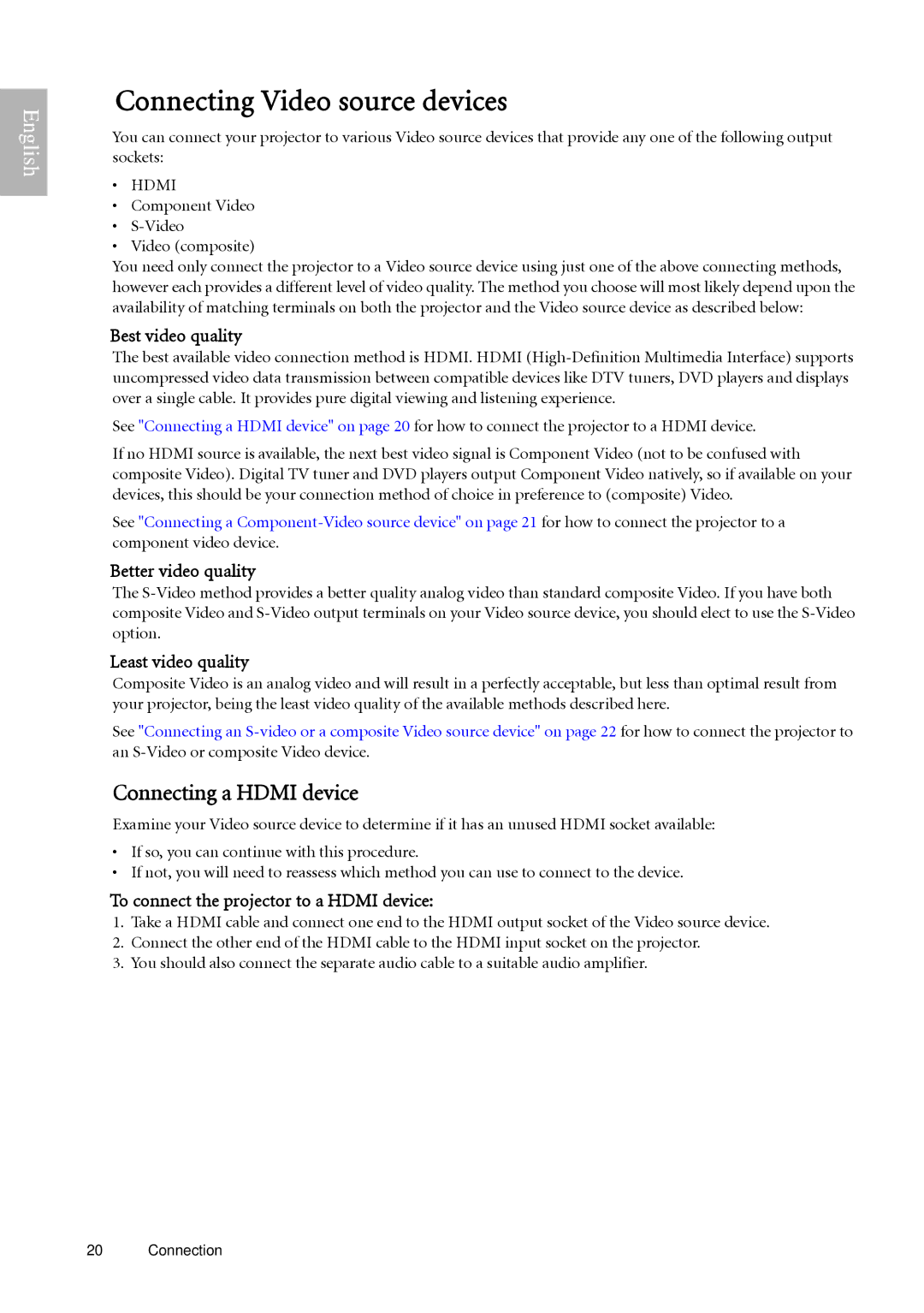English
Connecting Video source devices
You can connect your projector to various Video source devices that provide any one of the following output sockets:
•HDMI
•Component Video
•
•Video (composite)
You need only connect the projector to a Video source device using just one of the above connecting methods, however each provides a different level of video quality. The method you choose will most likely depend upon the availability of matching terminals on both the projector and the Video source device as described below:
Best video quality
The best available video connection method is HDMI. HDMI
See "Connecting a HDMI device" on page 20 for how to connect the projector to a HDMI device.
If no HDMI source is available, the next best video signal is Component Video (not to be confused with composite Video). Digital TV tuner and DVD players output Component Video natively, so if available on your devices, this should be your connection method of choice in preference to (composite) Video.
See "Connecting a
Better video quality
The
Least video quality
Composite Video is an analog video and will result in a perfectly acceptable, but less than optimal result from your projector, being the least video quality of the available methods described here.
See "Connecting an
Connecting a HDMI device
Examine your Video source device to determine if it has an unused HDMI socket available:
•If so, you can continue with this procedure.
•If not, you will need to reassess which method you can use to connect to the device.
To connect the projector to a HDMI device:
1.Take a HDMI cable and connect one end to the HDMI output socket of the Video source device.
2.Connect the other end of the HDMI cable to the HDMI input socket on the projector.
3.You should also connect the separate audio cable to a suitable audio amplifier.
20 Connection
